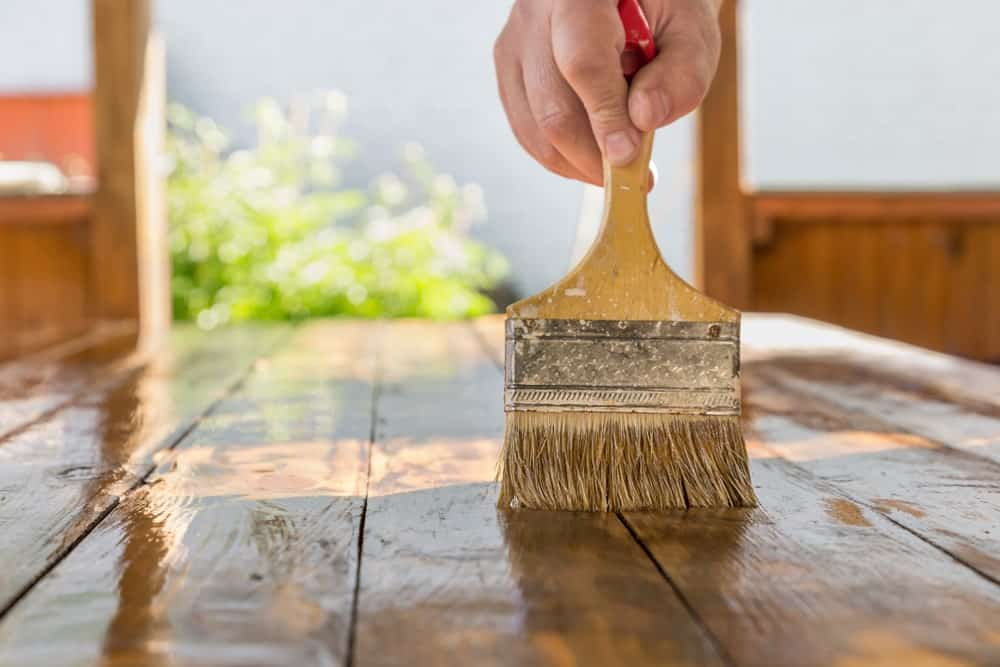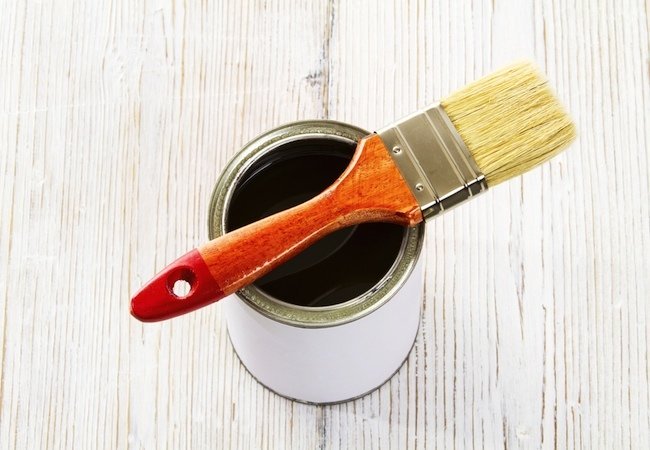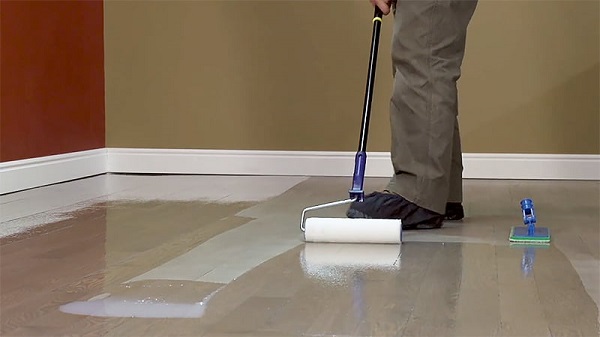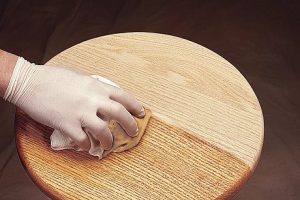by Linea Lorenzo
Applying polyurethane to floors can be a rewarding, but difficult task.
If it is done right, polyurethane can greatly improve the look of most of your floors. Compared to shellac and lacquer, polyurethane will last much longer as well as look better when applied correctly.
However, there are some instances when things can go wrong. Do not forget that polyurethane is a varnish, and it must be applied very carefully. If it isn’t, it can cause discolorations, create inconsistencies in the surface of the floor, and other things that can permanently damage or alter the floor.
Applying polyurethane to your floor is risky if you do not know what you are doing. There is no denying that.
Contents
This tutorial article will show you exactly how to apply polyurethane to floors the right way this way you can avoid the risks involved in such an undertaking.

Different floor surfaces will call for different ways of applying polyurethane. This is the first mistake that most make, and it is the most common. They think that all floor surfaces are created equal when it comes to this kind of thing, and that is simply not true.
Is your floor made of pure wood? Synthetic wood? Linoleum? You need to know that different surfaces will require different amounts of polyurethane and different methods of applying it.

If you do not have the right materials, it will be impossible to apply polyurethane to anything properly.
This is the second most common mistake people make. They think they have the right materials, but they have no idea that they are missing certain things that make the finishing process complete.
If you are even considering applying polyurethane to your floor, you need to have all the right materials. If you do not, you will encounter complications, and you will also need to make certain accommodations could have been avoided if you had the right materials the first time.
While the right materials vary from surface to surface, there is a foundational set of materials that are universal to any material that you wish to apply polyurethane to. Aside from the required polyurethane, sanding blocks, and shop vacuums, the following are absolutely necessary for any polyurethane finish job.

After gathering the materials and tools necessary to apply polycarbonate, you must seal the surfaces that you want to apply the polycarbonate.
Wood based surfaces are surprisingly sensitive to the sanding and sandblasting that takes place when getting them ready for polycarbonate finishing. If they are not sealed, it could compromise the surface itself and negatively affect it.
Sealing the surface can also be done with polyurethane. To do this, combine one part of mineral spirits to two parts polyurethane in a glass jar. Don’t forget to stir these substances before mixing them in the glass jar.
After doing this, you can begin applying the substance by brushing the surface. Brush from end to end without stopping. Do not forget that any substance that is combined with polyurethane will dry very quickly, because in a way, you are creating a new surface.
Again, make sure your brush strokes are in completely straight lines. If there is any dripping, be sure to catch the drips and smooth them into the surface.
This is how you should physically apply any surface that involves polycarbonate. Although it may take a lot of concentration, you will need to brush in straight strokes very carefully without stopping.

One thing you want to avoid when applying polyurethane are air bubbles. This is why you need to use polyurethane straight from the can. Doing this ensures that the polyurethane that you are applying has not encountered any pressure that could cause air bubbles.
Avoiding air bubbles is important because polyurethane dries quickly and air bubbles will affect how the entire varnish finish will look. It can take some effort to remove these dried up air bubbles, so it is much easier to prevent them at the onset.
When you apply exactly two coats of undiluted polyurethane, you will prevent air bubbles from forming.
But what happens if air bubbles still develop after applying the polyurethane?

Blemishes can develop even after the first two coats of polyurethane dry.
These blemishes, be they air bubbles, runs, or dust specks, typically occur during the sanding process, but can also arise during the application process. This is why you should have all the materials you need before applying polyurethane. If you have these materials, you’ll have a much easier time removing these blemishes.
When removing these blemishes, make sure the coat is completely dry. It generally takes about 12 hours for polyurethane to dry. After the polyurethane is dry, you can then remove these blemishes with a common razor blade.
Be careful when doing this, as you could cut into the surface itself.

Although it only takes 12 hours for polyurethane to dry after the first two coats, you should wait about 48 hours to apply the final coat.
When you wait this long, you’ll be able to see what blemishes decisively exist on the surface. Then you can remove these blemishes for good before applying this final coat.
If you have applied the final coat like you did your first two, the surface should have a smooth sheen to it.
If you need to remove blemishes after this final coat of polyurethane dries, you can do this after 24 hours.
Applying polyurethane to floors can seem like an overwhelming task, but it is not as painful a process as you might think.

Preparation is probably the most important thing to think about when applying polyurethane. Gathering the materials and tools necessary, making sure you have everything you need will ensure that you have a much easier time when doing something like this.
The other thing that you should be very aware of is the time it takes for polyurethane to dry. Knowing that it takes 12 hours for this substance to dry and 48 hours for it to dry to where you can remove blemishes can be very advantageous.
If you armed with the right kind of knowledge and have the right kinds of tools and materials, applying polyurethane to floors can be much easier than it lets on.
 |
 |
 |
 |

About Linea Lorenzo
Linea was born to love drawing and just a few tech gadgets. While not working or sleeping, he often spends hours to look through the coolest, latest gadgets at different shopping sites, drooling about them. He also likes to keep things clean and tidy - now that the reason you see so many cleaning devices and electronics reviews at linea.io. Ah yes, he made the site also just for that. Occationally, he invited friends to share their expertise around here too. Linea received Bachelor of Arts in Arts & Letters at Sacramento State University.
 |
 |
 |
 |
You can Get FREE Gifts. Furthermore, Free Items here. Disable Ad Blocker to receive them all.
Once done, hit anything below
 |
 |
 |
 |